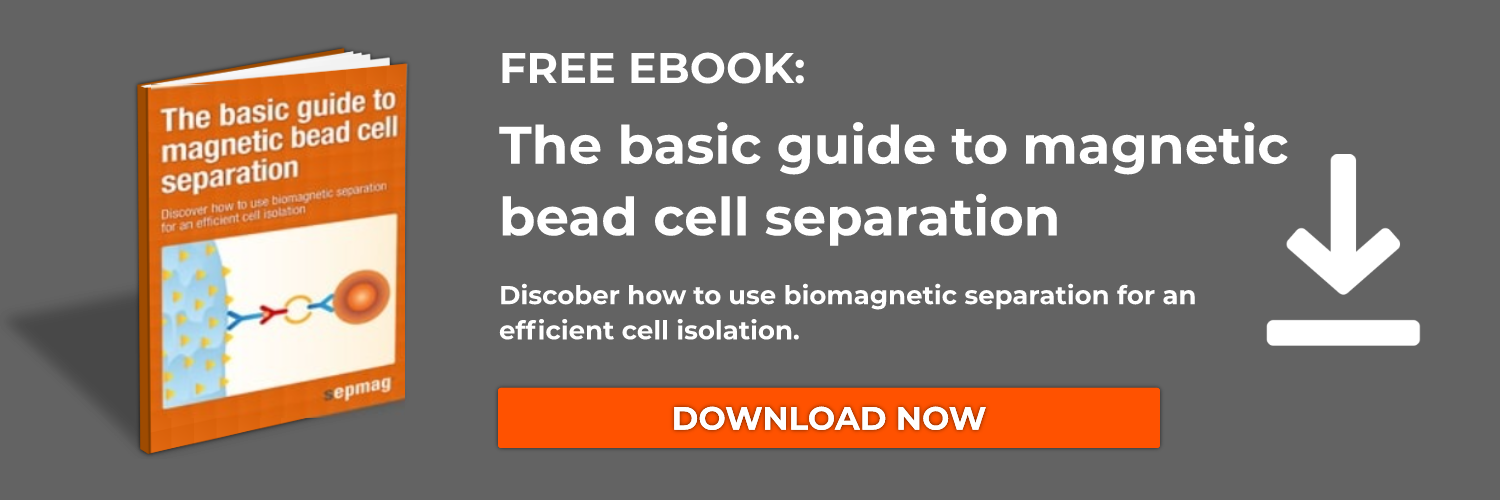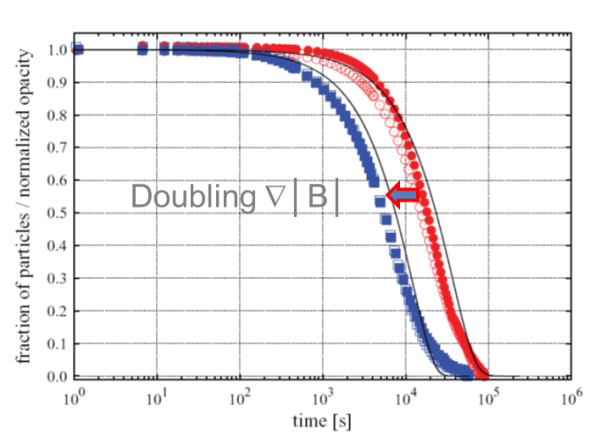Biomagnetic separation is a technique that uses small superparamagnetic iron-oxide particles and a magnet to separate cells or nucleotides from solution. These particles are often called magnetic nanoparticles or microspheres due to their small sizes ranging from less than 100 nm to 5 μm. The magnetic particles are chemically altered (functionalized) to be biologically compatible and to specifically bind to a variety of different cell types. The targets of interest can be bound by the particles and isolated from solution (positive selection) or the unwanted targets can be bound and removed from solution (negative selection). Magnetic bead cell sorting has many advantages over traditional column-based methods due to increased specificity, decreased procedure time, and increased cell viability.
Collection of magnetic beads in a magnetic field gradient
Iron oxide at the nanometer or micrometer scale is superparamagnetic, which means that it has no magnetism in a zero magnetic field. However, it can become magnetic when placed in close proximity to a permanent magnet. The permanent magnet influences the magnetic dipoles of the iron oxide particles, which causes the particles to rotate (due to torque from a constant magnetic field) or change location (in a magnetic field gradient). When an external permanent magnet creates a magnetic field gradient the magnetic beads become magnetized and move through the gradient toward the magnet.
Commercially available separation racks, such as those sold by Sepmag, take the guesswork out of the magnetic separation process. The separation rack is a set of permanent magnet arranged to generate a magnetic force. Commercial racks are engineered to the correct size and shape for optimal superparamagnetic bead recovery. With a specially designed magnet surrounding the test tube the magnetic beads travel to the edges of the container and are held in place by magnetic force. The remaining cell solution is removed and discarded (positive selection) or further purified (negative selection).
Magnetic bead particle size and distribution affects separation efficiency
Smaller magnetic particles require a stronger magnetic forceto separate out of solution, but the smaller size allows multiple beads to bind to each cell. It is important to choose beads with a narrow size distribution to ensure a consistent separation process. It is equally important to choose a separation rack that ensures a gentle homogenous force over the working volume. A properly scaled magnetic separation rack improves the efficiency of the cell separation and results in more viable cells.
The future of the magnetic separation process
New developments in bead surface functionalization strategies are continually being developed and the technique is becoming more popular beyond its traditional role in cell enrichment. It is gaining traction as a clinical assay that quickly and easily identifies dangerous pathogens. It has also been used to remove chemical and molecular contaminants from food, water, and the environment. The principles of magnetic bead cell separation are even being adapted for use in drug delivery strategies and cancer therapies. Surely, new applications for the biomagnetic separation process will continue to emerge in the coming years.
Related news





